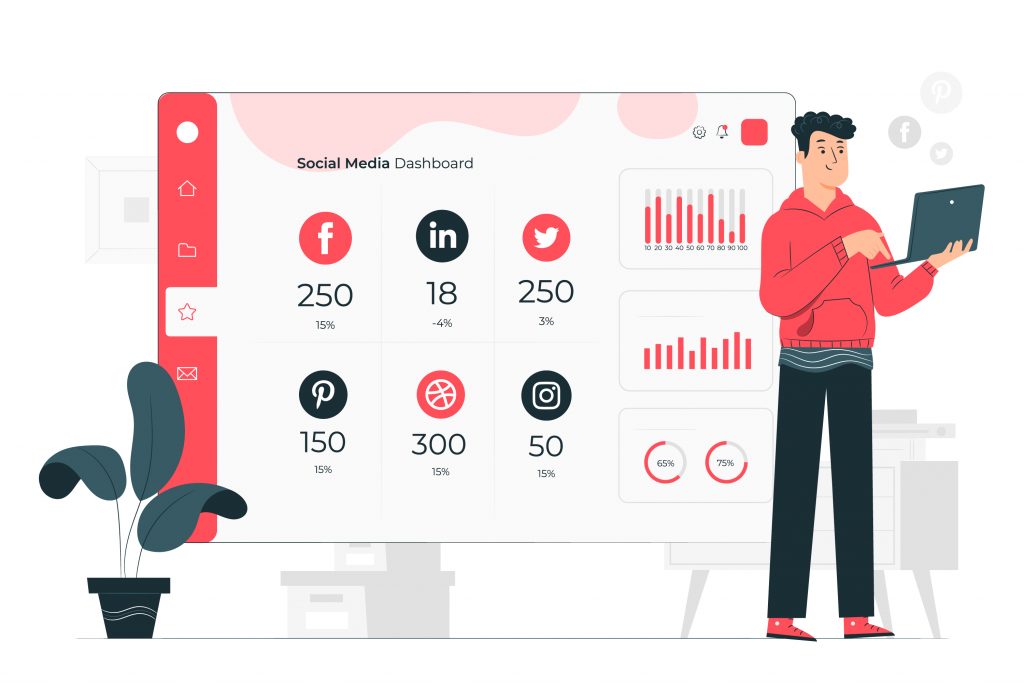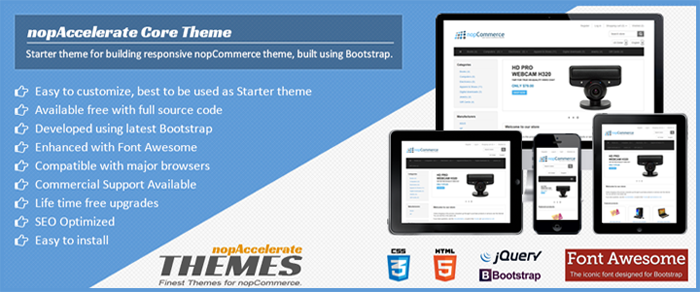13 Remarkable Tips to Cut Down Shopping Cart Abandonment
Shopping Cart Abandonment is a nightmare for eCommerce owners. It costs billions in revenue across the eCommerce business and can be damaging for any online retailer.
In most business models, the shopping cart is the last touch-point of the pre-purchase stage and you should not be surprised by a seemingly high shopping cart abandonment rate.
According to the 46 shopping cart abandonment statistics compiled by BayMard Institute, the average shopping cart abandonment rate is an absolutely brutal 69.23%!!
Nevertheless, you need to understand why it is happening and find solutions to mitigate it, to improve your eCommerce business.
Given below are the top reasons for shopping cart abandonment sorted in a workflow that follows the customer order journey, including after-order tips to re-target:
- Speed up your website.
- Use Social Proof.
- Show High-Quality Images throughout.
- Use Trust Seals.
- Offer a customer-friendly Return and Refund policy.
- Add the “Save to Wish list” button.
- Proactively display Discounts and Offers.
- Use a neat progress marker.
- Avoid Hidden Costs (shipping, tax, fees).
- Allow Guest Check Out.
- Offer Multiple Payment Options.
- Re-target the Abandoners.
- Optimizing Your Store to Reduce Cart Abandonment.
1. Speed up your website:
No One Likes Waiting!
Everyone knows that one of the most important factors for a website’s success is website speed. The faster your eCommerce website loads the better it is. A study by Digital shows that 53% of online shoppers expect eCommerce pages to load in 3 seconds or less.
If your eCommerce website is taking more than 6 seconds to load, chances are that many users are simply giving up long before they make it to your checkout page. However, many of those who do make it may still leave before checking out if the page takes too long to load.
You can check out your website speed using google analytics.
Ultimately speeding up your entire website is the best way to help your checkout page. Some tips to improve your website speed includes:
- Optimizing images.
- Cache your website content.
- Use a Dedicated or Fast Web server.
- Use a CDN (content delivery network).
- Use CSS Sprites and so on.
Treat website speed as a priority as it improves many important things like:
- Organic traffic (SEO).
- Conversation rate.
- Cart abandonment rate.
- Customer experience.
2. Use Social Proof:
Psychological Persuasion is an effective technique!!
One of the best ways you can keep your online customers from getting cold feet at the checkout page is by addressing it, before they get there. To achieve it we highly recommend you leverage the power of social proof.
Some of the popular Social proofing examples are:
- Product rate meter.
- Professional advice.
- Customer reviews.
- Social follower count and so on.
Shopping cart abandonment statistics state that 79% of people admit that user-generated content impacts their purchasing decisions.
Adding social proof to your product description tells your online customers that real people like and buy your products. It gives them a psychological assurance that they are making the right decision the moment they decide to buy.
3. Show High-Quality Images throughout:
A picture is worth a thousand words!
Always remember, for an eCommerce store, images are your salesmen. Besides covering the gap between an offline store and an online store, a quality image can reduce doubts that result in cart abandonment.
High-quality images clicked from different direction gives a customer the feel of a physical store. They remove the last-minute doubts during checkout.
Make sure that you show quality images during the checkout process also. It keeps the customer’s eyes on the prize.
The best example of this tactic is fashion eCommerce sites.
4. Use Trust Seals:
Shopping cart abandonment statistics show that 18% of cart abandonment happens because customers do not trust the eCommerce site with their credit card information.
Why? Because online buyers are getting smarter these days. Awareness about online fraud has taught them how to judge if a website is safe or not.
You might have one of the securest websites in the world, but if you fail to promote it, you will be in that 18% category. Trust seals give a psychological assurance to a customer’s mind that they are in safe hands.
There is a broad range of Trust seals that you can display on your website. Let us discuss them one by one:
- SSL seals: it tells your customer that the communication between your browser and the website is encrypted via the Secure Socket Layer (SSL) protocol.
You get “HTTPS” in your website URL when you buy an SSL certificate.
Google has also confirmed that HTTPS is a ranking signal. This means domains with HTTPS will rank higher than those with just HTTP.
- Trust seals: They indicate the authenticity of the website and its business. Some examples of Trust seals are Google Trusted Store, BBB Accredited, TRUSTe, and so on. Trust seals show your customer that your online store is legit.

- Trusted payment seals: When online shoppers see trusted payment brands on your website they feel more confident. Seals of established payment brands like Mastercard, Visa, American Express and PayPal boost customers’ trust in your website.
- Made-up seals: Besides the branded seals best shopping cart service providers also recommend In-house seals like Free shipping, 100% quality, Free returns, Secure Checkout, and so on. These Made-up seals inspire the buyer’s confidence in your website.
As per the ecommerce statistics shared by Statista, an estimated 20 billion USD online payment fraud happened globally in 2021. Due to these instances, customers think many times before purchasing on a new website. Using Trust Seals provides your customer an assurance equivalent to the verbal assurance provided by an offline store.
5. Offer a customer-friendly Return and Refund policy:
Offering a customer-friendly return policy is a must for ecommerce. A convenient return policy allows an online store to bridge the gap between a brick-and-mortar store where the customer can check products physically before buying.
Shopping cart abandonment statistics state that 55% of online shoppers prefer not to buy from ecommerce businesses that do not offer flexible return policies. Purchase on an online store is based on photos and trust. An easy return and refund policy helps online stores to maintain that trust.
Free returns and easy refunds have a positive impact on the shopping cart abandonment rate and it encourages first-time buyers to take the leap of faith. Take a tip from Amazon, the market leader.
6. Add the “Save to Wish-list” button:
Not all shopping carts are permanently abandoned. It is human nature to compare and buy. As per shopping cart abandonment statistics, 27% of people like to save the product in the cart to buy it later after comparing or as per their convenience.
This habit of the customer of using a cart as a wish list or a place to save products they want to buy later hits not only your shopping cart abandonment rate but also impacts your inventory procurement strategy.
This problem can be solved by introducing the “Save to Wish-list” button to your website. Adding this feature helps in many ways:
- It reduces the cart abandonment rate.
- It reduces the generation of false signal for product procurement. These are generated on reaching the minimum product quantity threshold.
- It prevents the loss of products saved as a wish list by the customer during scheduled maintenance to clear the abandoned cart.
It helps quick sales from a returning customer who is back after comparison or has time or money to buy it.
7. Proactively display Discounts and Offers:
Everyone loves discounts, especially when they are offered after one has made up their mind to buy the product at a particular price. Discounts pitched at the right time hammer the sale to completion.
If you have the buffer to give a discount, do not lose a sale. Make sure you proactively approach and offer it to the customer. It will not only increase conversion but also impart a good customer experience.
Take a note from Myntra, an Indian fashion platform that does not shy away from displaying Discounts and Offers.
8. Use a neat progress marker:
While traveling, knowing where you are and where you be next is comforting. The same human thing works during checkout. A neat progress marker tells your customer about the steps they have already completed and the next step they need to follow.
Well-informed customers have less inclination to abandon their carts. Do you still doubt this suggestion? Here is a convincing example: Amazon (the big daddy).
9. Avoid Hidden Costs (shipping, tax, fees):
Surprising customer with costs during the checkout process is a bad idea. Hidden costs are the top reasons for shopping cart abandonment. More than 1/3rd of the cart abandonment happens because of this reason.
Customers feel tricked when a surprise cost pops up during checkout. It abruptly increases the product cost, which their mind has accepted and is ready to pay. It makes them re-evaluate their purchase as per their expectation and thus increases the chances of cart abandonment.
The best way to counter this is to show the product price, which is inclusive of all costs. Showing an all-inclusive price also allows you to give a positive surprise to the customer by showing them that they are eligible for free shipping. Let me give you a convincing example from one of the market leaders in the shoe industry Adidas.
10. Allow Guest Check Out:
Shopping cart abandonment statistics tell us that 24% of online shoppers abandoned their shopping cart when they were asked to create an account. Account creation fatigue is common for first-time shoppers who may not be quite ready to sign up for an account and share their details.
Like hidden costs, account creation also disrupts the shopping flow. Forcing your customer to do something they do not like is saying “no” to a huge amount of conversions.
Conversions are Everything!!
I think conversions are more important than having a few extra membership signups. Give your customers “Guest Checkout” as an option for a hassle-free purchase.
Here is how Nike does it.
I feel that eCommerce stores should prompt customers for account creation after the sale. Again that should be optional and should be portrayed in a way that benefit the customer. Things like easy order tracking, discount coupons, subscribe to save, and so on can lure your customer to create an account on your website. Again this is recommended only after the sale is complete and you have got the money.
11. Offer Multiple Payment Options:
Insufficient Payment Options result in 9% of cart abandonment. With a rise in the number of Fintech companies’ customers are getting accustomed to different payment options. They feel safer using payment options that they are familiar with.
Implementation of so many payment options is a daunting task but offering multiple payment options also minimizes the risk of losing a sale. For maximum impact, study your target market and find out which payment options are popular among target demographics. Another option is to onboard a popular third-party payment processor in the target region that offers all the needed payment Options.
12. Retarget the Abandoners:
I will be honest. Even after following these tips, some shopping cart abandonment will happen. The important thing here is how determined you are to get them back. The difference between “a salesman” and “A GREAT SALESMAN” is that a great salesman never gives up and makes the toughest customer buy the product.
If you are ready to be that great salesman, let us discuss a few strategies on how to get customers back:
- Exit-Intent Pop-ups Ads: In this strategy, a pop-up gets triggered if the shopper’s behaviour signifies that they are about to leave. This pop-up can be used to show offers like promotional discounts, free shipping, extra discount coupons, and so on. The idea behind this is to lure and push the customer to complete the sale.
You might say that customers may find the pop-up unprofessional. The answer is the customer is already leaving, you have nothing to lose, and if you get the sale, it is worth a try. Here is an example from a brand called Bliss.
- Run retarget campaign: If your budget permits, run Facebook and Google Ads.Some customers require extra persuasion for sale. These ads allow you to target people who have already visited your website, or have abandoned the cart, or have shown interest in your products, or are potential buyers.Facebook and google ads simply tempt these people by showing them ads for products they liked on your website where ever they go online.
- Remind via personalized email: In this strategy, automated cart recovery emails are triggered after a specified time to remind customers that there is a small shopping cart for sale awaiting them on your website. This email can include personalized information, discount, benefits of the product, links to pick up from where they have left, reviews, and so on.
According to data collated by Rejoiner email sent 60 minutes after the customer’s last interaction on a website has the maximum conversion rate.
13. Optimizing Your Store to Reduce Cart Abandonment:
Never think you are perfect. If you want to succeed, judge yourself from the customer’s perspective. No one has been able to build a perfect ecommerce store. Had that been the case, big tech won’t need so many employees to run their day-to-day functions. They need to optimize their website to keep up with the market trends and so do you.
There are a few time-tested best practices you can follow to optimize your store and reduce shopping cart abandonment. Let us discuss them:
- Collect customer feedback: Seasoned ecommerce owners know the importance of customer feedback. I know it is not easy to digest hard words but accepting and correcting your mistakes makes you a better organization. Send feedback requests to all your buyers and if possible to cart abandoners also, to learn what you could do to make their life, and your sales better.
- Use Google Analytics to find funnel leaks: Google Analytics is a great tool. It allows you to study the customer journey in detail. Through Google Analytics, you can pinpoint the web pages and the processes where shoppers are abandoning your website. Using this data, you can correct these pain points and make the customer journey smoother. Go to any best shopping cart service provider, the first they will ask you is for access to google analytics. I hope you got my point.

- Diligently perform A/B testing: A/B testing is a very important process in the ecommerce world. It helps you experiment and improve yourself and your website. In simple words, A/B testing is a process of comparing two different versions of the same webpage or process on your website to find out which has a better conversion rate. The results of A/B testing can be studied using Google Analytics. It is so important to ecommerce that it deserves a separate article to discuss it and I mean it.
Conclusion:
“Cart Abandonment” on an ecommerce store is just like “Window Shopping” at a Brick-and-Mortar Store. You cannot achieve a zero percent Cart Abandonment until you have an exclusive do-or-die product. What you can do is reduce the Cart Abandonment rate by following the best practices.
Our effort here was to help you get as many check-ins as we can and guide you on how to provide those check-ins with the best customer experience so that you not only get the sale but also earn lifelong customer loyalty.
Always Remember: “Happy Customers are your Best Assets”


































